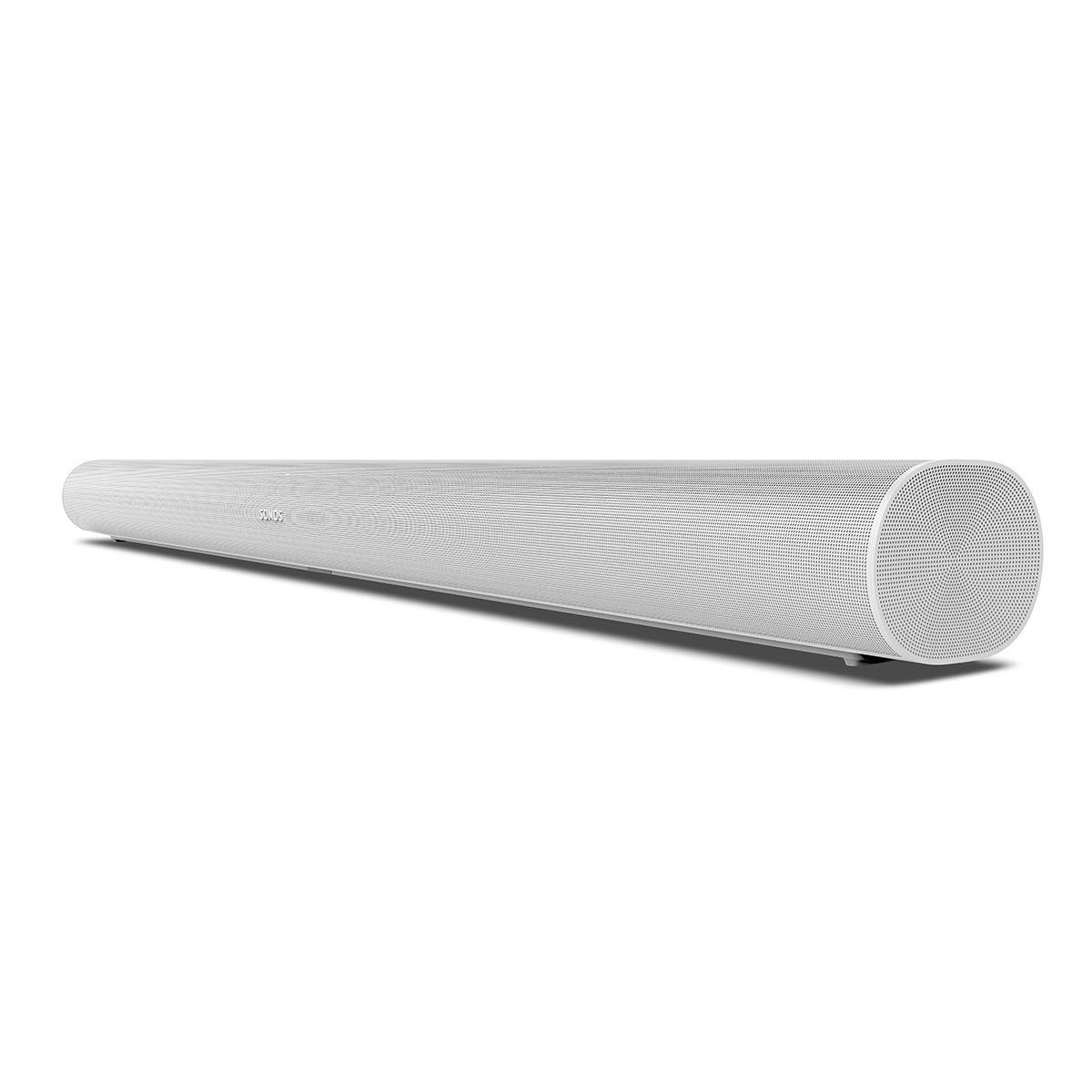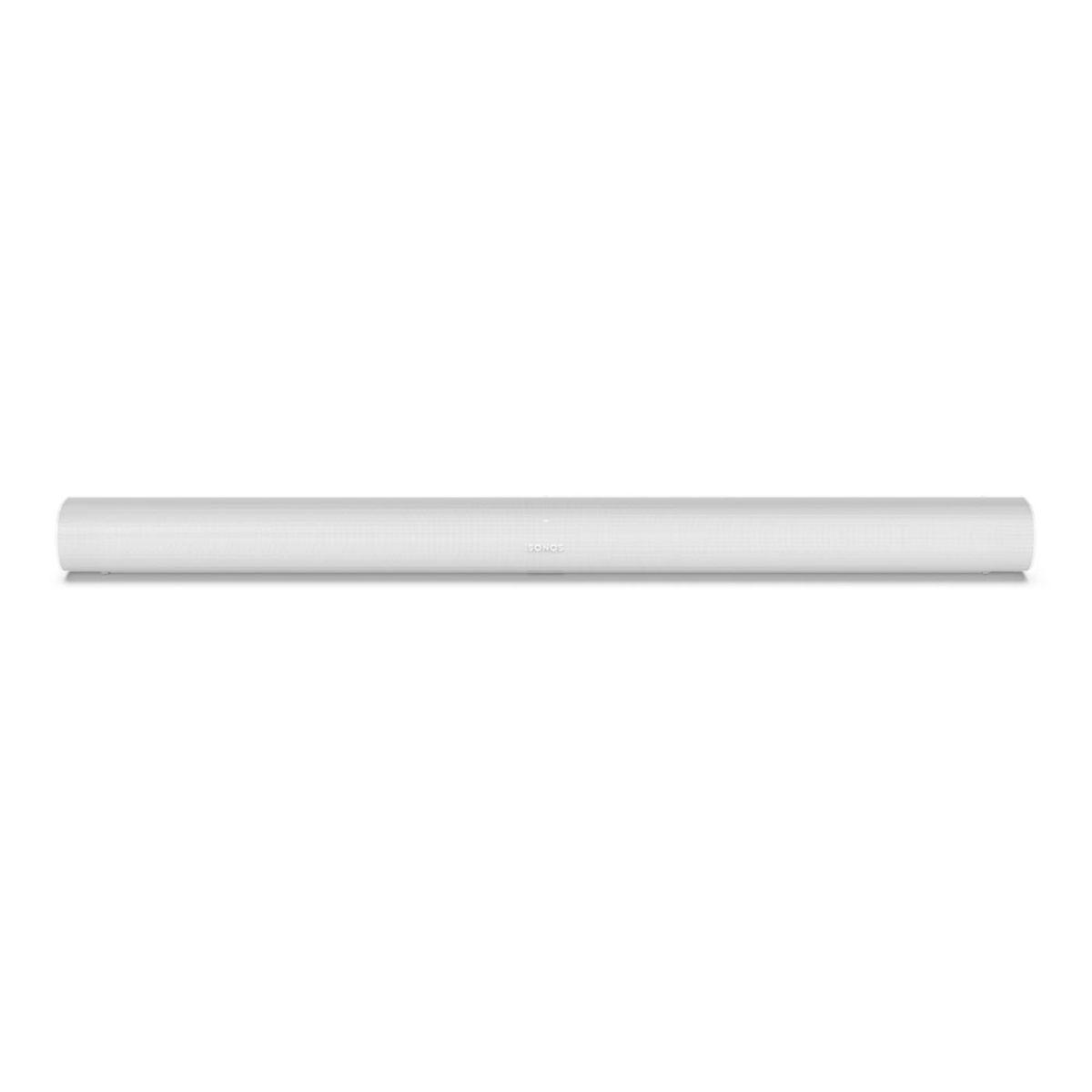
The home theater audio landscape has changed dramatically in recent years, with soundbars becoming increasingly sophisticated. Two notable contenders, the Sonos Arc ($564.44) and JBL Bar 300 ($349.95), represent different approaches to delivering immersive sound in your living room.
Before diving into specifics, let's understand what makes modern soundbars special. Dolby Atmos, a technology that creates three-dimensional sound, has become a standard feature in premium soundbars. However, how they implement this technology varies significantly.
The Sonos Arc, released in June 2020, represents a traditional but refined approach, using actual upward-firing speakers that bounce sound off your ceiling. In contrast, the newer JBL Bar 300 uses virtual processing to simulate height effects without physical upward-firing drivers.

The Sonos Arc's 11-driver array creates a notably wider and more precise soundstage - that's the perceived space where sounds appear to come from. Its upward-firing speakers produce genuine overhead effects, making scenes with helicopters or rainfall particularly convincing.
The JBL Bar 300's MultiBeam technology creates a respectable virtual surround effect, but the lack of physical upward-firing drivers means height effects are less convincing. However, in smaller rooms (under 200 square feet), this difference becomes less noticeable.
Neither soundbar includes a separate subwoofer, but they handle bass differently:

For serious home theater use, both would benefit from adding a subwoofer, though the Arc performs better standalone.
Both units offer special voice enhancement features:
The Arc generally produces clearer, more natural-sounding dialogue, especially during complex action scenes where background effects can overwhelm speech.

The Sonos Arc includes built-in microphones for direct voice control through Amazon Alexa or Google Assistant. It also supports Apple AirPlay 2 and the sophisticated Sonos app ecosystem.
The JBL Bar 300 requires external smart speakers for voice control but includes Chromecast, AirPlay 2, and Bluetooth connectivity.
Sonos's Trueplay technology (iOS devices only) performs sophisticated room analysis to optimize sound for your space. The JBL's Easy Sound Calibration is more basic but works with any smartphone.

Sonos has built a reputation for long-term software support and ecosystem expansion. The Arc can be part of a larger whole-home audio system, with easy expansion options for rear speakers and a subwoofer.
The JBL Bar 300 functions more as a standalone unit, though it can integrate with other JBL multiroom products.
At $564.44, the Sonos Arc commands a premium price but delivers superior sound quality and features. The $349.95 JBL Bar 300 offers good value for smaller rooms and users who prioritize streaming features over ultimate sound quality.
In practice, both soundbars excel in different scenarios:
Choose the Sonos Arc if:
Choose the JBL Bar 300 if:
Since its 2020 release, the Sonos Arc has received multiple software updates improving performance and adding features. JBL's newer Bar 300 benefits from more recent processing technology but lacks the hardware sophistication of the Arc.
Both companies have good track records for software support, but Sonos's longer history of maintaining older products gives it an edge for long-term value.
| Sonos Arc | JBL Bar 300 |
|---|---|
| Price - Total investment considering features | |
| $564.44 (premium pricing) | $349.95 (mid-range pricing) |
| Audio Output - Determines overall volume and power | |
| 11 Class-D amplifiers (not specified watts) | 260W total power output |
| Speaker Configuration - Impacts sound quality and Atmos performance | |
| 11 drivers: 8 woofers, 3 tweeters with upward-firing | 6 drivers: 4 racetrack drivers, 2 tweeters (no upward-firing) |
| Dolby Atmos Implementation - Affects 3D sound experience | |
| True Atmos with physical upward-firing speakers | Virtual Atmos through digital processing |
| Size - Consider your TV and space requirements | |
| 45" x 4.5" x 3.4" (larger, matches 55"+ TVs) | 32.3" x 2.2" x 4.1" (compact, suits 43-55" TVs) |
| Voice Assistant - Convenience for smart home integration | |
| Built-in Alexa & Google Assistant | External voice assistant support only |
| Room Calibration - Optimizes sound for your space | |
| Trueplay (iOS only) with sophisticated room analysis | Basic Easy Sound Calibration |
| Connectivity Options - Flexibility for various sources | |
| HDMI eARC, WiFi, AirPlay 2, Ethernet | HDMI eARC, WiFi, AirPlay 2, Bluetooth, Optical |
| Expandability - Future system growth potential | |
| Full Sonos ecosystem compatibility | Limited expansion options |
| Additional Features - Extra value considerations | |
| Night Sound mode, Speech Enhancement, TruePlay | PureVoice, MultiBeam surround, JBL One app |
| HDR Support - Important for video passthrough | |
| Basic HDR passthrough | HDR10, Dolby Vision support |
| Software Updates - Long-term value and improvements | |
| Regular updates with new features since 2020 | New product with standard maintenance updates |
The Sonos Arc provides better movie performance with true upward-firing speakers for Dolby Atmos and superior dialogue clarity. The JBL Bar 300 offers good movie sound but lacks the same immersive experience.
The Sonos Arc costs $564.44, while the JBL Bar 300 is priced at $349.95, making it about $215 less expensive.
Both can work without a subwoofer, but the Sonos Arc has better built-in bass response. The JBL Bar 300 would benefit more from adding a subwoofer for deeper bass.
The JBL Bar 300 is better suited for small rooms due to its compact size and virtual surround sound. The Sonos Arc performs better in medium to large rooms.
The Sonos Arc has built-in Alexa and Google Assistant. The JBL Bar 300 requires external smart speakers for voice control.
Both are relatively easy to set up, but the JBL Bar 300 has a simpler setup process. The Sonos Arc requires more initial configuration but offers more customization options.
Yes, both support Apple AirPlay 2 and WiFi streaming. The Sonos Arc has a more developed streaming ecosystem, while the JBL Bar 300 adds Bluetooth connectivity.
The Sonos Arc offers superior sound quality but at a higher price. The JBL Bar 300 provides good value for its lower price point.
Both work with modern TVs via HDMI eARC. The Sonos Arc includes an optical adapter for older TVs, while the JBL Bar 300 has both HDMI and optical inputs.
The Sonos Arc offers extensive expansion options within the Sonos ecosystem. The JBL Bar 300 has limited expansion capabilities.
Both perform well for sports, but the Sonos Arc offers better dialogue clarity for commentary. The JBL Bar 300 provides good crowd atmosphere reproduction.
Both include necessary HDMI cables in the box. The Sonos Arc and JBL Bar 300 connect primarily through HDMI eARC for the best audio quality.
We've done our best to create useful and informative comparisons to help you decide what product to buy. Our research uses advanced automated methods to create this comparison and perfection is not possible - please contact us for corrections or questions. These are the sites we've researched in the creation of this article: whathifi.com - soundandvision.com - en.community.sonos.com - cnet.com - worldwidestereo.com - abt.com - creativeaudio.net - target.com - sonos.com - worldwidestereo.com - businessinsider.com - en.community.sonos.com - youtube.com - whathifi.com - safeandsoundhq.com - youtube.com - cnet.com - mm.jbl.com - jbl.com - bestbuy.com - support.jbl.com - dell.com - walmart.com